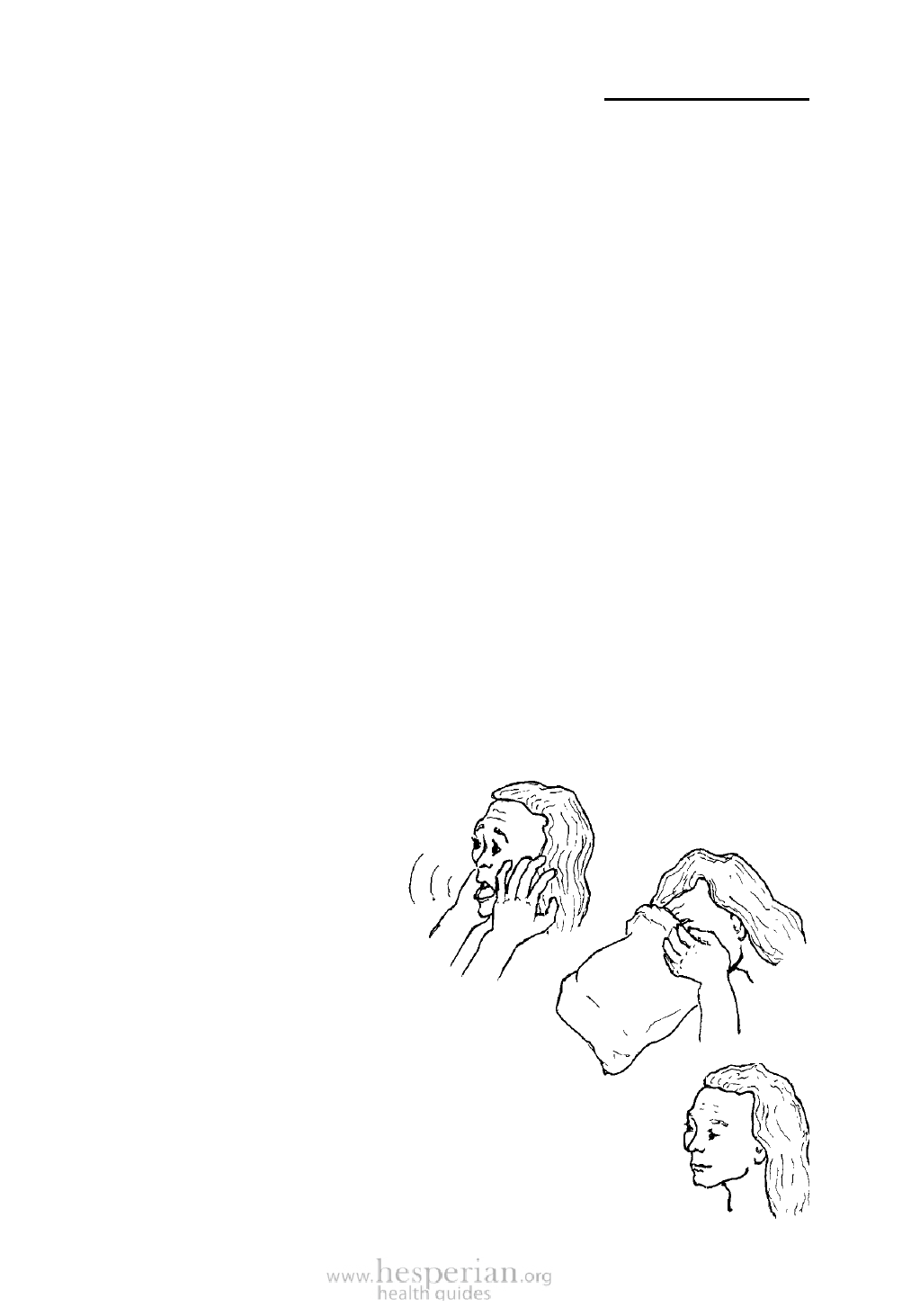
24 Where There Is No Doctor 2011
Spanish Name: SUSTO (HYSTERIA, FRIGHT) Name in Your Area:
According to Mexican villagers, susto is caused by a sudden fright a person has
had, or by witchcraft, black magic, or evil spirits. A person with susto is very nervous
and afraid. He may shake, behave strangely, not be able to sleep, lose weight, or
even die.
Possible medical explanations for susto:
1. In many people, susto is a state of fear or hysteria, perhaps caused by the
‘power of belief’ (see p. 4). For example, a woman who is afraid someone will hex
her becomes nervous and does not eat or sleep well. She begins to grow weak and
lose weight. She takes this as a sign she has been hexed, so she becomes still more
nervous and frightened. Her susto gets worse and worse.
2. In babies or small children, susto is usually very different. Bad dreams may
cause a child to cry out in his sleep or wake up frightened. High fevers from any
illness can cause very strange speech and behavior (delirium). A child that often looks
and acts worried may be malnourished (p. 112). Sometimes early signs of tetanus
(p. 182) or meningitis (p. 185) are also called susto.
Treatment:
When the susto is caused by a specific illness, treat the illness. Help the person
understand its cause. Ask for medical advice, if needed.
When the susto is caused by fright, try to comfort the person and help him
understand that his fear itself is the cause of his problem. Magic cures and home
remedies sometimes help.
If the frightened person is breathing very hard and fast, his body may be getting
too much air—which may be part of the problem:
EXTREME FRIGHT OR HYSTERIA WITH FAST HEAVY BREATHING
(HYPERVENTILATION)
Signs:
• person very frightened
• breathing fast and deep
• fast, pounding heartbeat
• numbness or tingling of face,
hands, or feet
• muscle cramps
BEFORE
Treatment:
♦ Keep the person as quiet as possible.
♦ Have her put her face in a paper bag
and breathe slowly. She should continue
breathing the same air for 2 or 3 minutes.
This will usually calm her down.
♦ Explain to her that the problem is not dangerous and
she will soon be all right.
AFTER